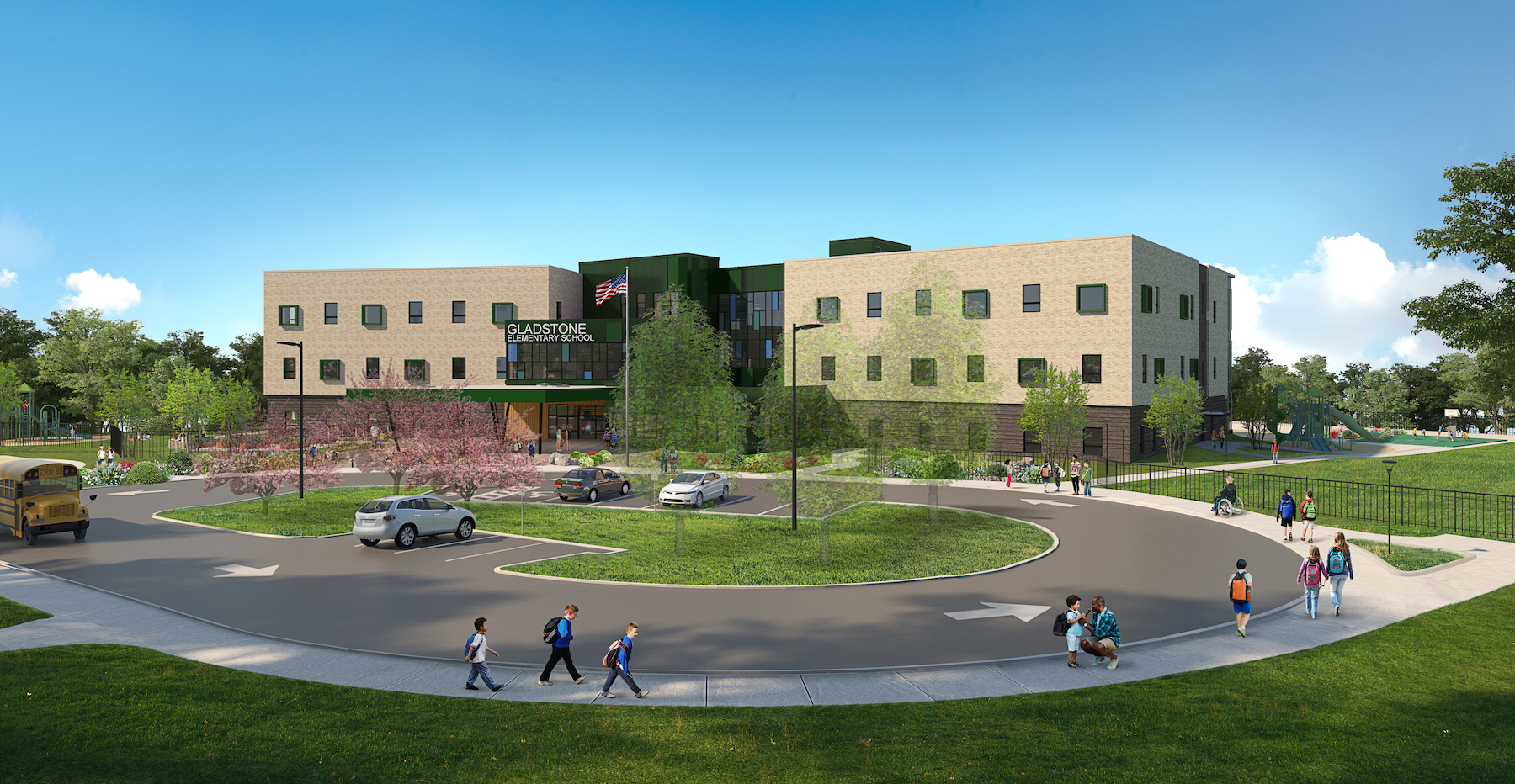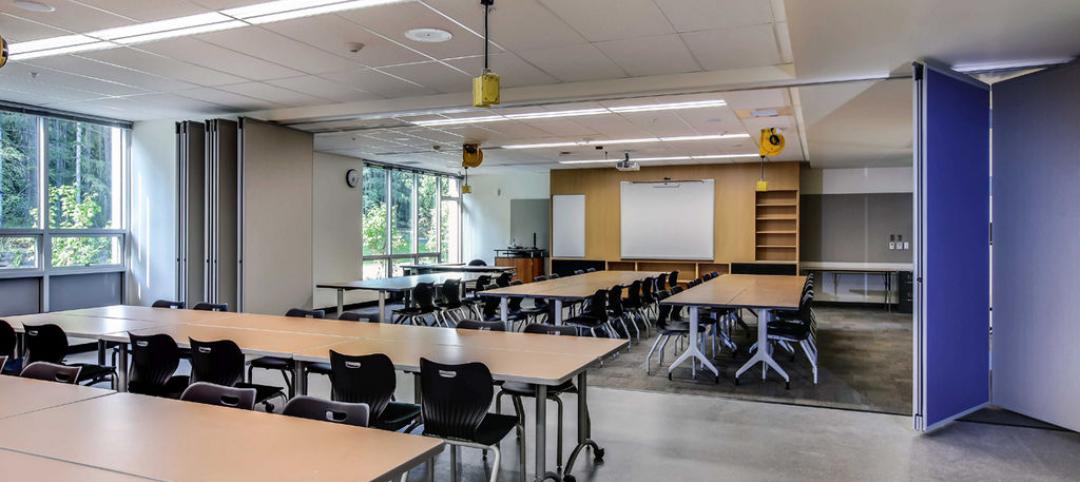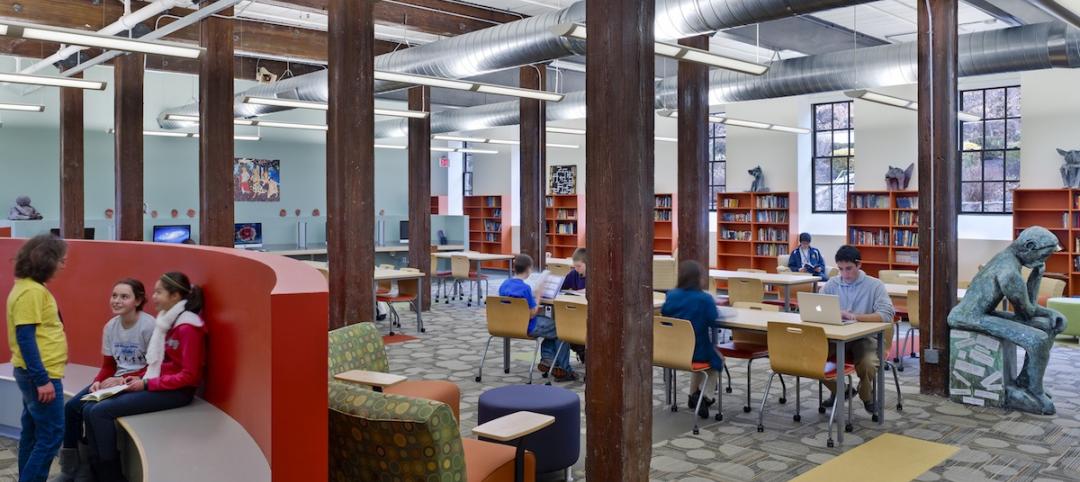Last November, Community Consolidated School District 15, consisting of 20 schools and seven municipalities in Illinois, approved the $93 million Moving 15 Forward referendum. Upon that approval, the District began work to address three major areas of improvement: repairing and restoring facilities, updating learning spaces, and streamlining students’ transitions from elementary through middle school into local high school districts 211 and 214.
Included in this effort is the expansion of Plum Grove Junior High School in Rolling Meadows, Ill., from a junior high serving seventh and eighth graders into a middle school that also educates sixth grade students.
Plum Grove Middle School, which will serve more than 800 students, is seen as a cornerstone of the District’s move toward adolescent-focused middle schools that use the “house” concept, which creates teams of teachers and staff that share smaller groups of students through an academic schedule.
Plum Grove’s $18.4 million upgrade and expansion got started on July 27. Wold Architects and Engineers provided the designs, and Nicholas & Associates is the general contractor. As part of Phase 1 of a four-phase construction plan, additions at Plum Grove include two new three-story classroom wings, or “houses,” which form the backbone of the middle school concept, for a total of 12 new general education classrooms.
Each grade-level house has its own learning commons with an innovative shared learning hub, including a central collaboration space, new science lab spaces, and modern, flexible classrooms. In addition, the project includes site updates such as traffic and paving improvements, a new track, and play fields.
Construction is expected to be completed for the 2024-2025 school year.
Sustainable, energy efficient design

A week before Plum Grove’s expansion was getting underway, the City of Cranston, R.I., held a groundbreaking ceremony for its new $83 million, 105,000-sf Gladstone Elementary School. This is one of five core building projects identified in Cranston’s five-year facility improvement plan that has been approved by Rhode Island School Building Authority for Housing Aid State Reimbursement.
Gladstone Elementary will be 40,000 sf larger than the existing school it replaces, and will incorporate the student body of Arlington Elementary, bringing its total to 798 K-5 students. The Building Team on this project includes Gilbane Building Company, Jacobs Engineering, and Finegold Alexander Architects. Construction is scheduled for completion in 2025.
The old school had been functioning up until June 14, but was in serious need of repair, with boarded-up windows. It will be demolished and during construction students will be relocated to a temporary location in Cranston.
The new building is designed to exceed current sustainability and energy codes. A combination of sub-surface and surface stormwater filtration systems are part of its scope, and the project will be compliant with the Northeast Collaborative for High-Performance Schools Criteria program (NE-CHPs), which provides guidance and verification for new school projects, renovations, and additions.
Gladstone will feature a combination of learning and community engagement areas, like a cafeteria and gymnasium with performance spaces. Its learning spaces will be modeled after Eden Park School in Garden City, where open floor plans contribute to collaborative learning environments. Gladstone will also have designated special-education classrooms, administration areas, a nurse’s office, and food preparation space.
Related Stories
| Mar 4, 2014
If there’s no ‘STEM crisis,’ why build more STEM schools?
Before you get your shorts in a knot, I have nothing against science, technology, engineering, or even mathematics; to the contrary, I love all four “STEM” disciplines (I’m lying about the math). But I question whether we need to be building K-12 schools that overly emphasize or are totally devoted to STEM.
| Feb 26, 2014
Adaptive reuse project brings school into historic paper mill
The project features nontraditional classrooms for collaborative learning, an arts and music wing, and a technologically sophisticated global resource center.
| Feb 14, 2014
Crowdsourced Placemaking: How people will help shape architecture
The rise of mobile devices and social media, coupled with the use of advanced survey tools and interactive mapping apps, has created a powerful conduit through which Building Teams can capture real-time data on the public. For the first time, the masses can have a real say in how the built environment around them is formed—that is, if Building Teams are willing to listen.
| Feb 5, 2014
'School Security' PDF available to BD+C readers - CORRECTED
I've received several requests from BD+C readers who design and build K-12 schools about the 3-part series we ran in our January issue ("Can Design Prevent Another Sandy Hook?"). They wanted to send the issue to their school boards and other public officials with responsibility for school safety. In light of the importance of this topic, as a special service to our readers we're making the series available in PDF form.
| Feb 5, 2014
Extreme conversion: Atlanta turns high-rise office building into high school
Formerly occupied by IBM, the 11-story Lakeside building is the new home for North Atlanta High School.
| Jan 30, 2014
What to expect in the metal building industry in 2014
Every year brings changes. This one won’t be any different. We’ll see growth in some areas, declines in others. Here’s a little preview of what we’ll be writing about 2014 when 2015 comes rolling in.
| Jan 28, 2014
White Paper: How metal buildings deliver long-term value to schools
A new white paper from Star Building Systems outlines the benefits of metal buildings for public and private school building projects.
| Jan 28, 2014
16 awe-inspiring interior designs from around the world [slideshow]
The International Interior Design Association released the winners of its 4th Annual Global Excellence Awards. Here's a recap of the winning projects.
| Jan 15, 2014
Report: 32 U.S. buildings have been verified as net-zero energy performers
The New Buildings Institute's 2014 Getting to Zero Status report includes an interactive map detailing the net-zero energy buildings that have been verified by NBI.
| Jan 13, 2014
Custom exterior fabricator A. Zahner unveils free façade design software for architects
The web-based tool uses the company's factory floor like "a massive rapid prototype machine,” allowing designers to manipulate designs on the fly based on cost and other factors, according to CEO/President Bill Zahner.

















